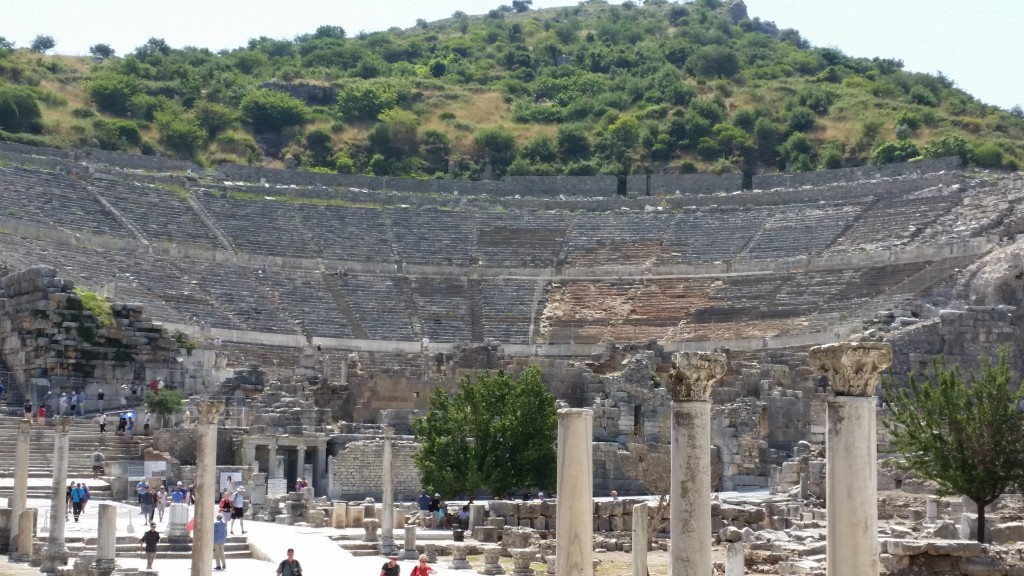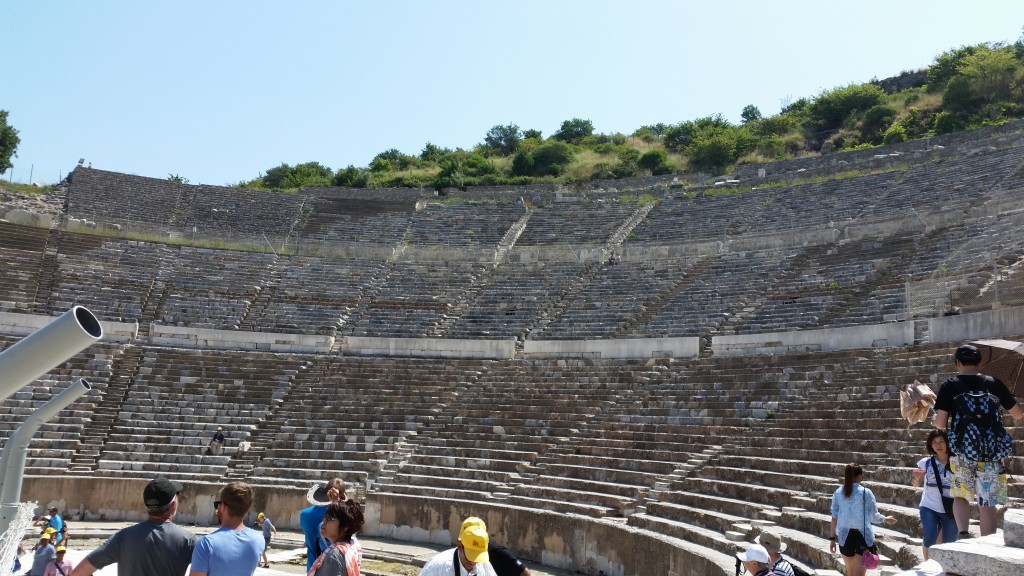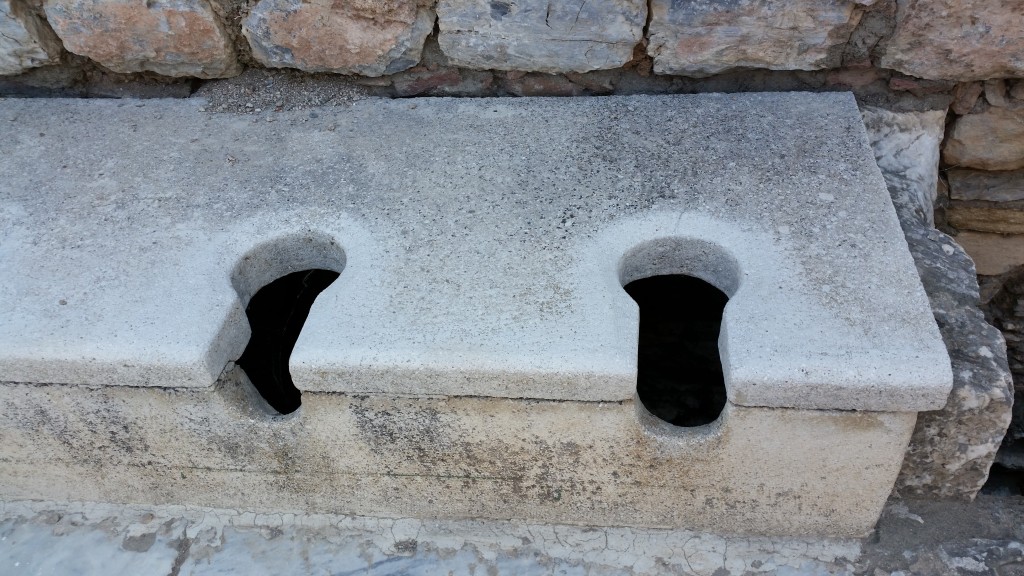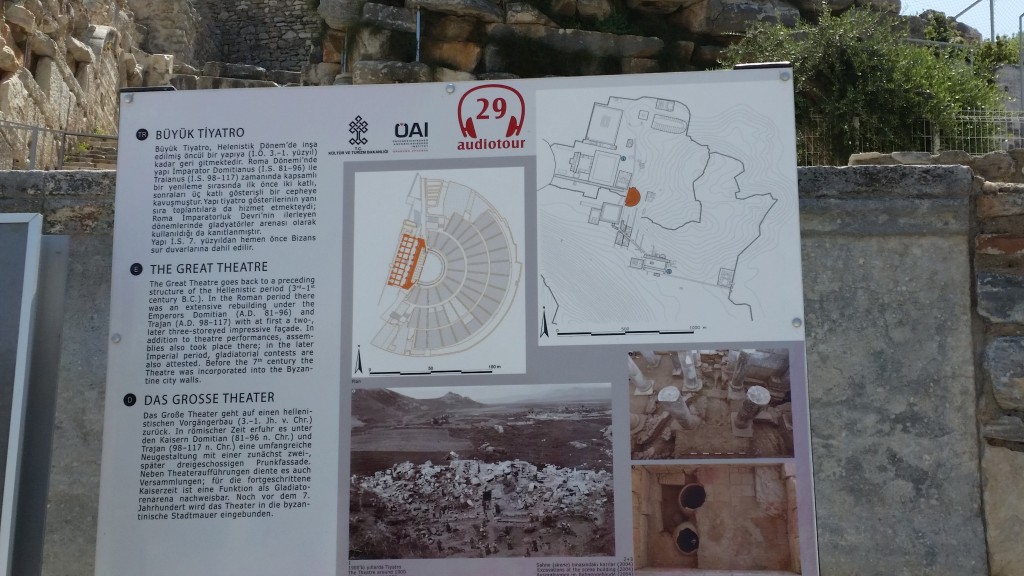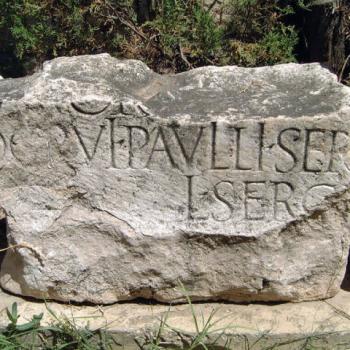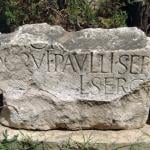Right across the street from the slope houses are the public baths and latrines. Men went at certain hours to the bath complexes, women at other hours. But of course only people who could afford it went. It cost money. The public latrines however seem to have been open to all. They look about how you would expect them to look, and BTW, no privacy in the privy. There is however an early image of Artemis by the door of the privy.
Perhaps the most famous sight in all of Ephesos is the Celsus library. Here are two good shots of it.
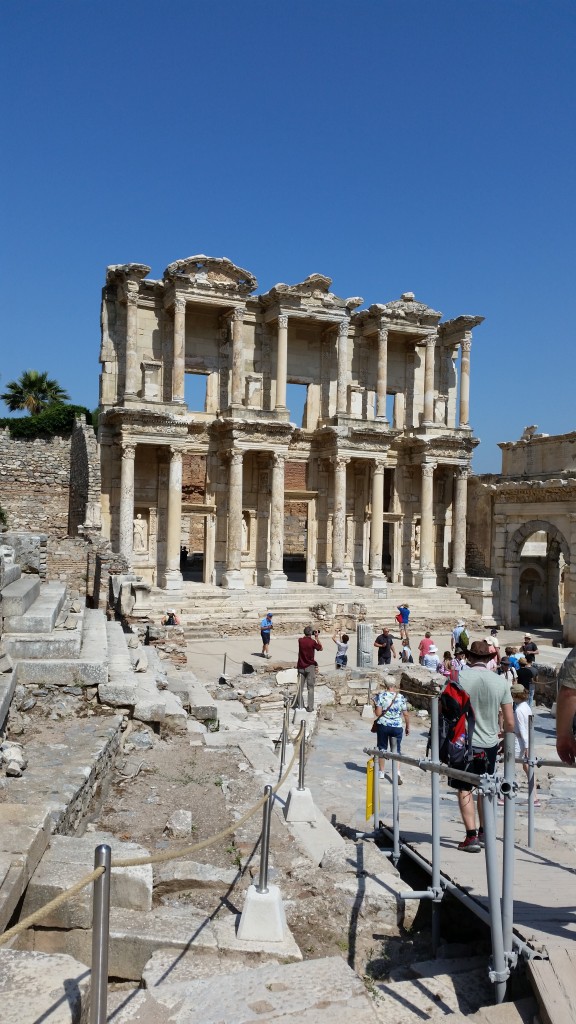
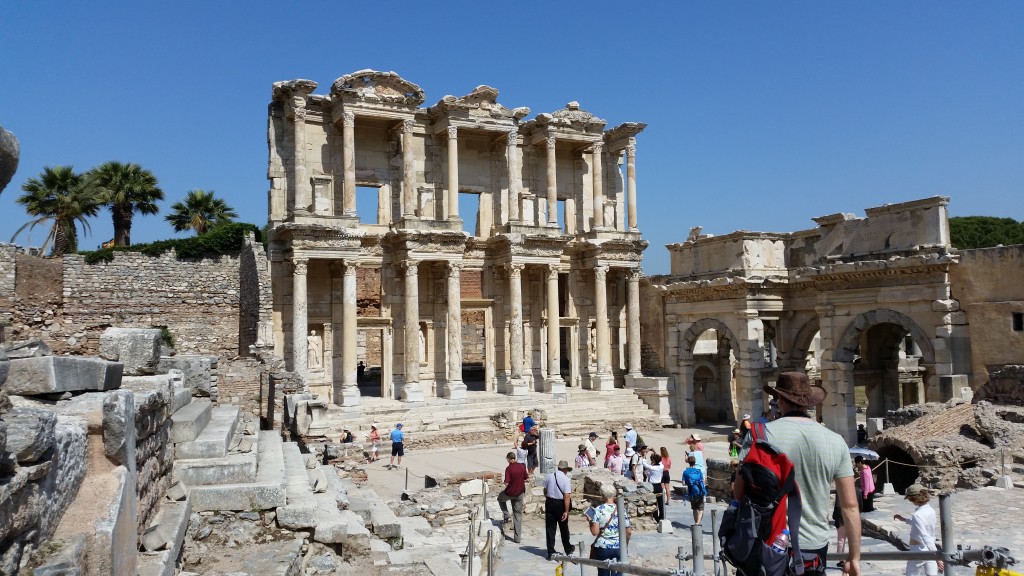
You may ask how we know this is Celsus’ library (built in the 2nd century)? Here’s the inscription by the building….
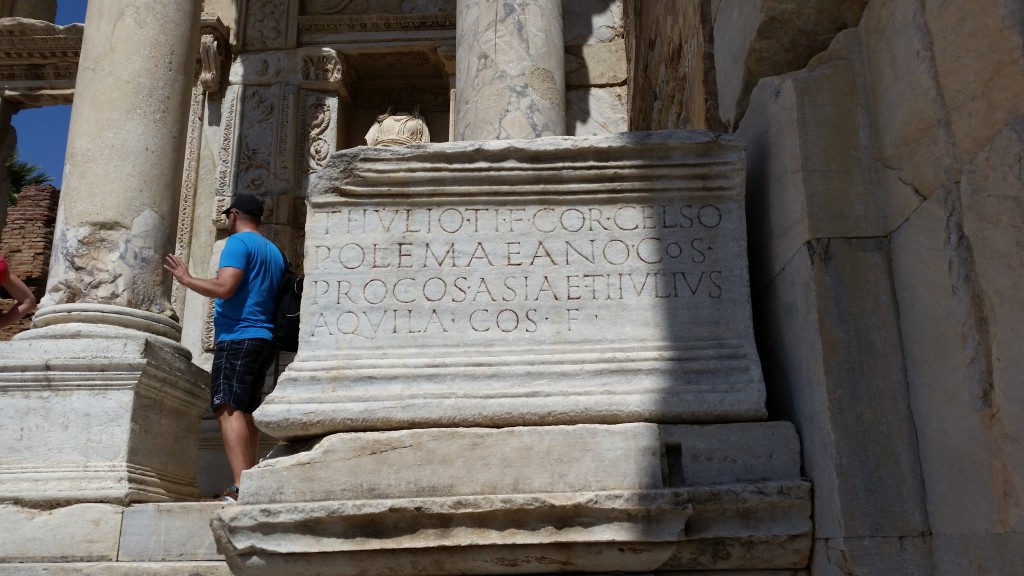
The library has two stories, and on the front we have the virtues represented by women, and a virtuous woman standing next to them. I’ll let you guess who she is.

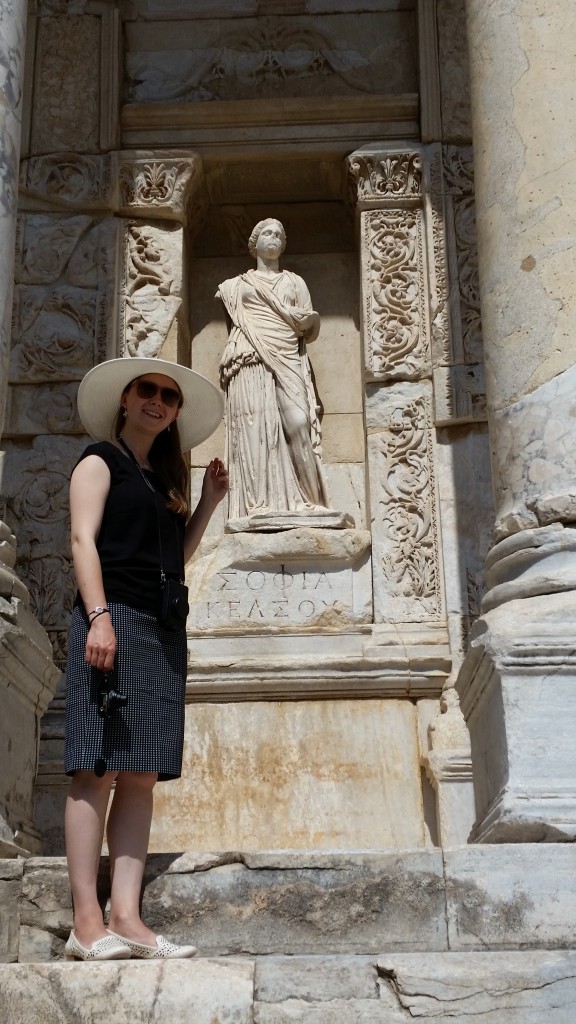
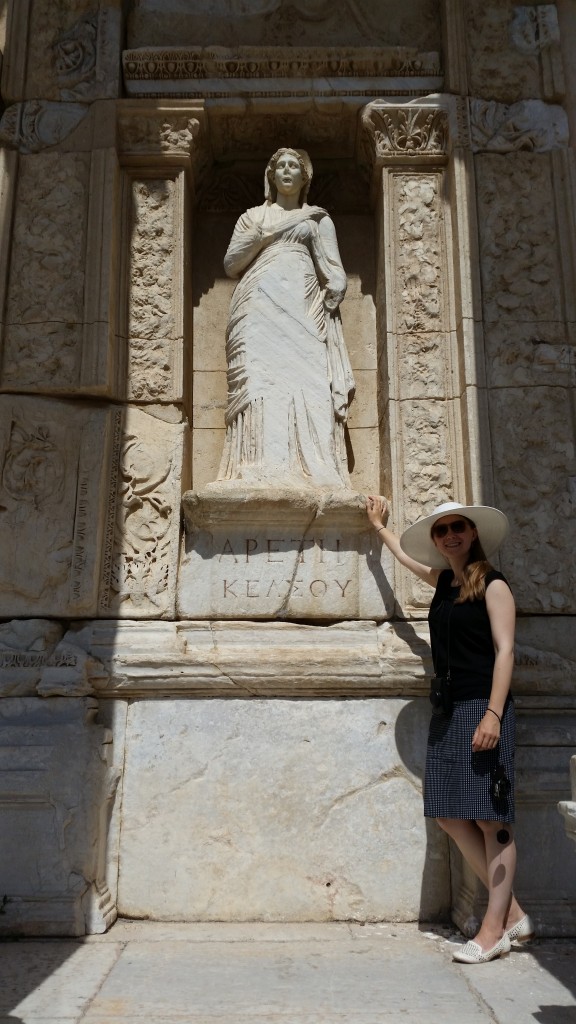
Right next to library is the entrance way to the south agora or market place, with all sorts of inscriptions. My personal favorite is the tiny one right at the top— agathi tychi, which means— good luck (or more formally ‘virtuous chance’)! As in good luck in finding any bargains here! 🙂
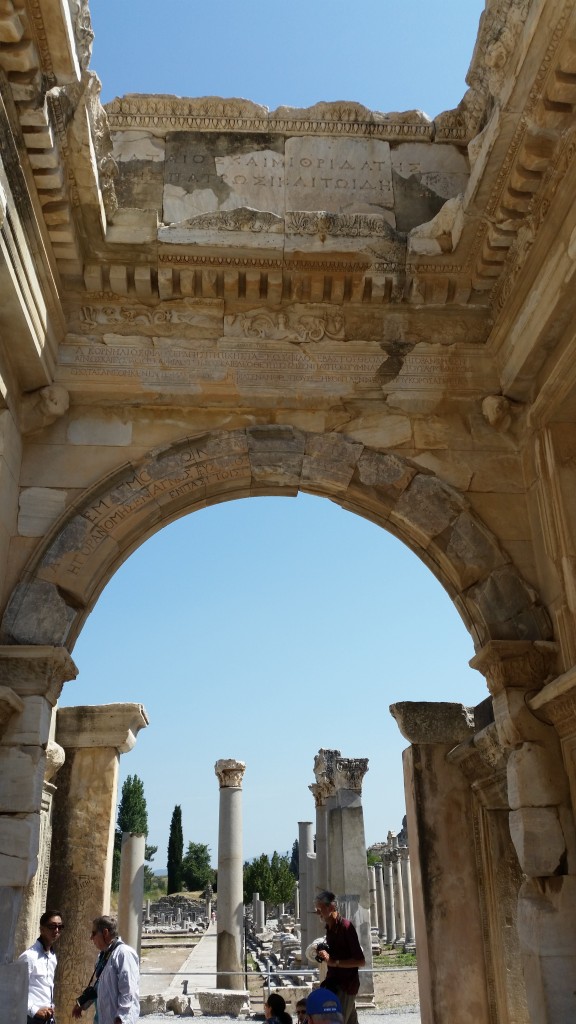
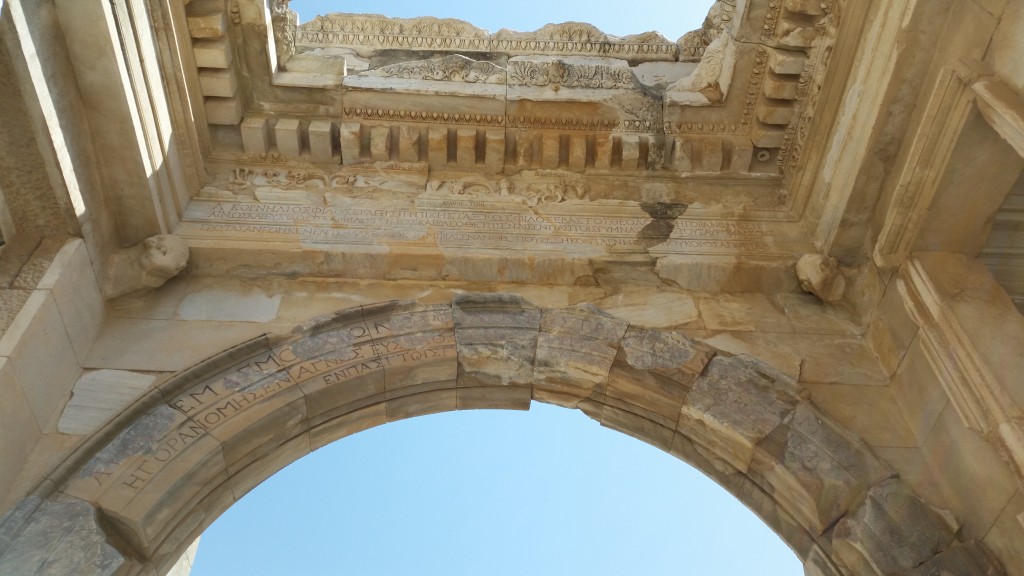
Down the main street towards the harbor on the right you will see emblems of gladiators…
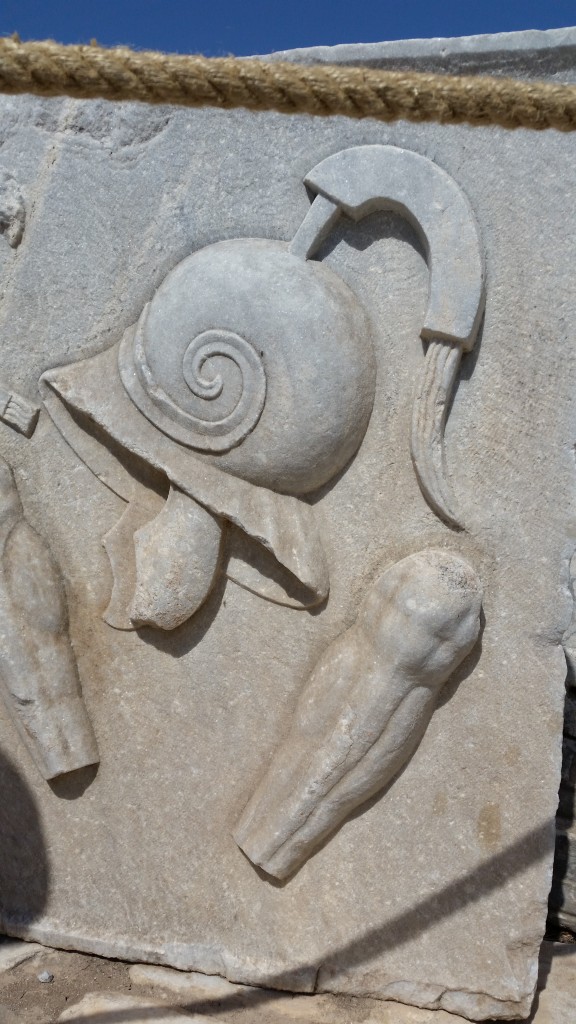
Not surprisingly this is just up the street from the great theater. Archaeologists judge the size of the city from the theater capacity times 10. In that case, Ephesos must have had close to a half million residents at some point.
And the theater was used for a variety of events. There was an infamous one here in more recent times– a concert with Sting and Jethro Tull, that just about ruined the ruins here. Thereafter, nothing but classical concerts here. But probably that concert was even louder than the chaps yelling ‘great is Artemis’. You don’t hear them shouting that anymore, not even in Ephesos. Artemis is dead. But there is a living God.
